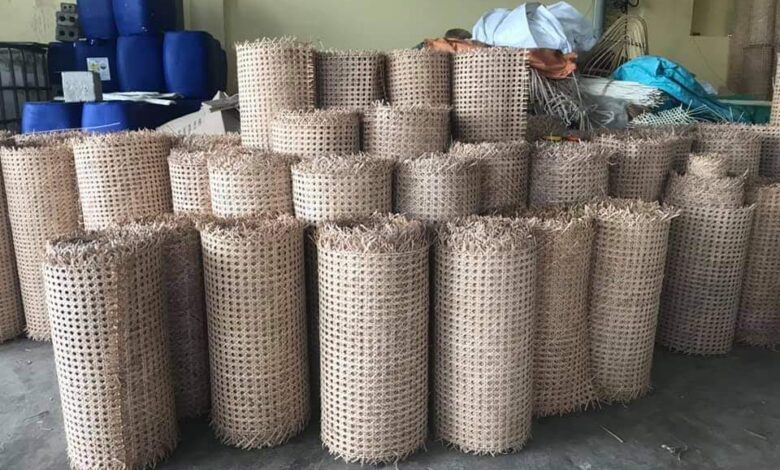
1. Introduction to Cane Webbing
Cane webbing, also known as wicker or rattan weaving, involves the interlacing of cane strands to create a mesh-like pattern. Originating centuries ago, this technique has been used for various functional and decorative purposes, ranging from furniture making to interior design accents.
2. Understanding Cane Webbing Material
2.1 Types of Cane Material
webbing can be crafted from natural materials such as rattan, bamboo, or synthetic alternatives like polyethylene. Each material offers distinct characteristics in terms of durability, flexibility, and aesthetic appeal.
2.2 Pros and Cons of Different Cane Materials
While natural cane materials exude warmth and authenticity, synthetic options provide enhanced durability and resistance to environmental factors. However, natural cane may be susceptible to moisture and insect damage, necessitating proper maintenance.
3. History of Cane Webbing
Cane traces its origins to ancient civilizations, where it was utilized for furniture, baskets, and architectural elements. Over time, this traditional craft evolved, experiencing periods of resurgence and adaptation to contemporary design sensibilities.
4. The Process of Webbing
4.1 Preparation of Cane Material
The process begins with harvesting and processing the cane into workable strands. These strands are then sorted and treated to enhance flexibility and durability.
4.2 Weaving Techniques
Skilled artisans employ various weaving techniques, including the traditional hand-caning method and modern machinery-assisted processes, to create intricate patterns and designs.
4.3 Finishing Touches
Once the weaving is complete, the webbing undergoes finishing treatments such as sanding, staining, or sealing to enhance its visual appeal and longevity.
5. Applications of Cane Webbing
5.1 Furniture Making
webbing is commonly used in the construction of chairs, benches, and headboards, imparting a timeless elegance to furniture pieces.
5.2 Home Decor
From lampshades to room dividers, webbing adds a touch of rustic charm to interior spaces, blending seamlessly with various décor styles.
5.3 Fashion and Accessories
Innovative designers incorporate cane into handbags, hats, and jewelry, offering unique statement pieces with a sustainable twist.
6. Maintenance and Care Tips
To prolong the lifespan of webbing furniture and accessories, regular dusting, and occasional conditioning are recommended. Avoid exposure to direct sunlight and excessive moisture to prevent deterioration.
7. Advantages of Cane Webbing
Cane webbing’s natural aesthetic, lightweight construction, and breathability make it an ideal choice for both indoor and outdoor applications.
8. Disadvantages of Cane Webbing
Despite its many benefits, cane may be prone to sagging over time and requires careful handling to prevent damage.
9. Sustainability and Environmental Impact
With growing concerns about sustainability, webbing offers a renewable and biodegradable alternative to synthetic materials, contributing to eco-conscious design practices.
10. Cane in Modern Design Trends
Contemporary designers are increasingly incorporating webbing into minimalist, Scandinavian, and bohemian-inspired interiors, showcasing its versatility and timeless appeal.
11. DIY Cane Webbing Projects
Enthusiasts can explore DIY tutorials and kits to create custom webbing projects, from reupholstering chairs to crafting wall hangings and planters.
12. Webbing vs. Alternatives
Comparative analysis reveals that while cane offers a distinct aesthetic and eco-friendly advantages, alternatives such as metal mesh and synthetic fabrics may better suit certain applications based on durability and maintenance requirements.
13. Where to Source Quality Cane Webbing
From specialty craft stores to online suppliers, a wide range of cane webbing materials and supplies are readily available for purchase, catering to both professional craftsmen and DIY enthusiasts.
14. Pricing Factors
The cost of cane webbing varies depending on factors such as material quality, weave complexity, and supplier location. While premium-grade materials may command a higher price, budget-friendly options provide accessible alternatives for diverse project needs.
15. Conclusion
In conclusion, cane webbing remains a timeless classic in the realm of design and craftsmanship, offering versatility, sustainability, and aesthetic appeal. Whether adorning furniture pieces, accentuating interiors, or inspiring DIY creativity, cane webbing continues to weave its way into the fabric of contemporary living.



